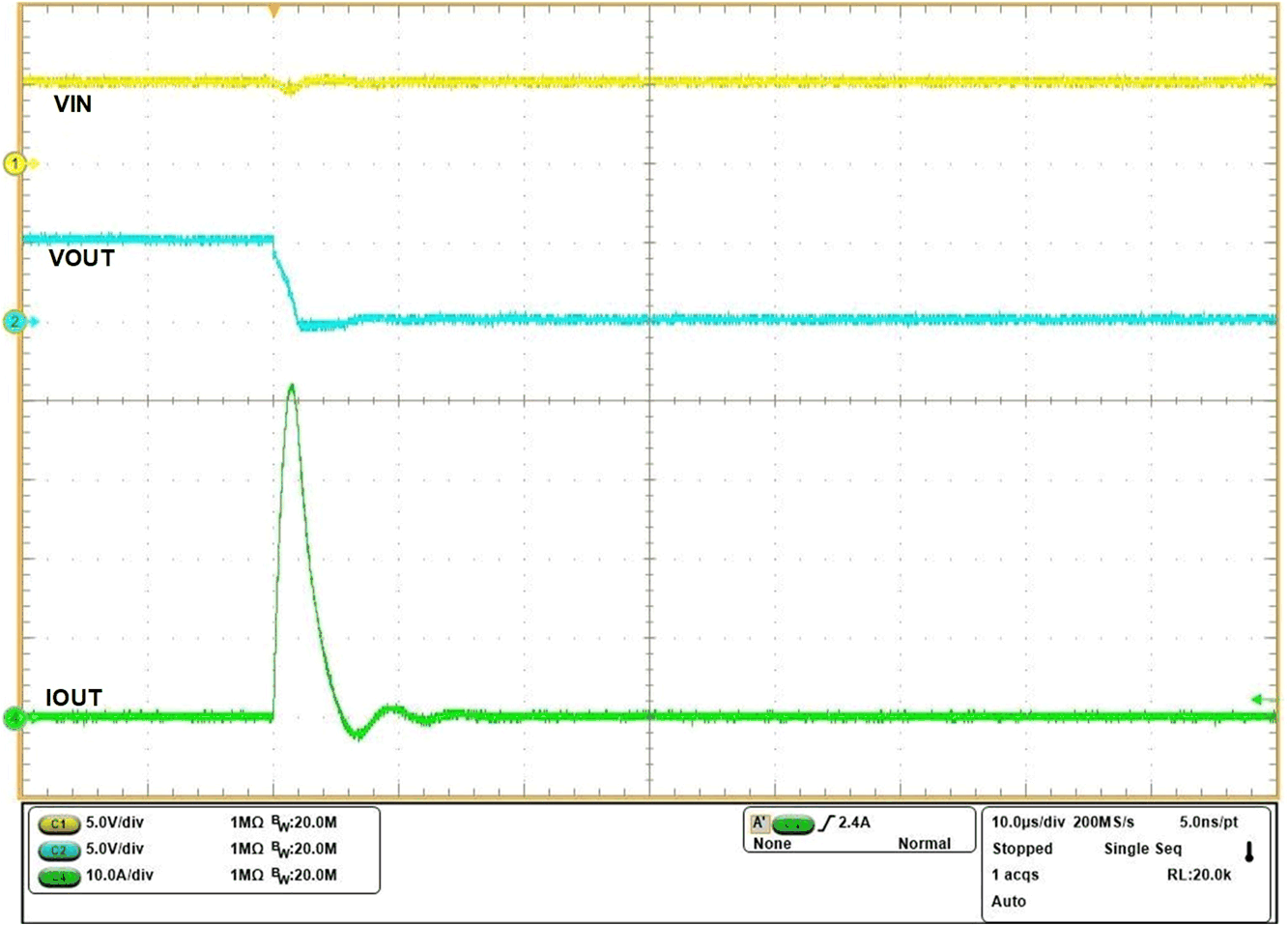SLVUC34 March 2021 TPS2521
5.3 Output Hot-Short Test
Use the following instructions to perform output Hot-Short test:
- Set the input supply voltage VIN to 5 V and current limit of as high as possible. Turn ON the power supply.
- Short the output of the device for example, VOUT to PGND with a very short cable.
- Observe the waveforms using an oscilloscope.
Figure 5-5 shows the test waveform of output hot-short on TPS25210EVM eFuse Evaluation Board.
 Figure 5-5 Output Hot-Short Response of TPS25210x Device
at VIN = 5 V, Cout = 10 uF, RLIM = 750 Ω
Figure 5-5 Output Hot-Short Response of TPS25210x Device
at VIN = 5 V, Cout = 10 uF, RLIM = 750 Ω